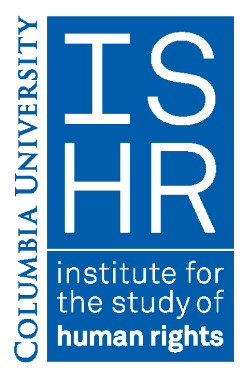| Title | Between Eichmann and Kant: Thinking on Evil after Arendt |
| Publication Type | Journal Article |
| Year of Publication | 1996 |
| Authors | Adi Ophir |
| Journal | History and Memory |
| Volume | 8 |
| Issue | 2 |
| Pagination | 89 |
| ISSN | 0935560X |
| Abstract | The web of action seems as chaotic and dangerous as a post-modern disintegrated public sphere. But this is simply because we are speaking of freedom; hence the lack of structure and order, hence the danger. [Hannah Arendt]'s theory of action is first and foremost an account of what I would like to call "the immanent plurality of freedom," or "the immanent freedom of the plural," which for her was (I think) the ultimate political value. There are two principal directions which Arendt pursues in order to think positively about this condition. The first is historical. She seeks political forms of society(12) which could make room for and contain the immanent plurality of freedom. At the same time, she tries to develop a scheme for a political history of the West, in which different political forms are examined in the light of the need to make room for the immanent plurality of freedom. This explains, I believe, her strong attachment to an idealized Greek polis (ignoring slavery, the exclusion of strangers and the oppression of women upon which the polis was built); but it also explains her critique of "the social" in modernity, which is a reduction of the plural to the many (the masses, the mob), and of the many to the one (the emergence of statistics, "the average," processes of "normalization," and above all the tyranny of the totalitarian state).(13) The second direction is phenomenological.(14) Arendt seeks in the sphere of human action, and in the history of the discourse about it, elements of cohesiveness that compensate for lack of order and certainty in the public realm, the sphere in which the immanent plurality of freedom is realized and comes to the fore. These elements are universal, belonging to the human condition in general. They may take different forms in different historical and cultural settings, but this does not affect their cohesive function. Mutual visibility is one such element, and Arendt's insistence on it in various places in the book should be interpreted in this light.(15) Three other elements are introduced by Arendt as different mechanisms for the stabilization of human action: forgiveness, punishment, and promise. It is in the context of the discussion of these three that Arendt's remarks on radical evil appear, and it is to this context that we now turn. |
| URL | http://search.proquest.com.libproxy.cc.stonybrook.edu/docview/195106882/140C70EFC3D60549C83/5?accountid=14172 |
| Short Title | Between Eichmann and Kant |





